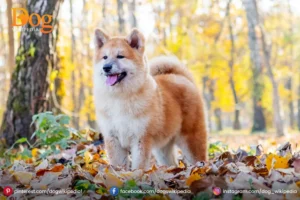Akita Puppy Introduction
Akita puppy is a charming and heart-stealing friend, because to cute face, and devoted nature. Although Akita are beloved family pets today, they were originally bred in Japan to hunt large animals. Akita pups are bright, devoted, and loving dogs that thrive on human interaction and attention.
They are born with a strong protective instinct. Akita are remarkable in size but gentle in nature, weighing between 70 and 130 pounds and standing 24-28 inches tall. Puppies of Akita grow up to be happy, devoted family members after receiving the right socialization and training.
1-Sources of Akita Puppy
Dog trainers, pet groomers, and veterinarians in the area might know trustworthy breeders or have information about puppies that are up for grabs. To connect with breeders and owners, go to conferences or events tailored to Akita .Breeder directories and referral services are frequently offered by national breed associations like the American Akita Association and the Akita Club of America.
Breeder listings are also provided by regional kennel groups, such as the American Kennel Club (AKC).Referrals from friends, family, or other dog owners can help you locate ethical breeders. Make sure to investigate and evaluate possible.
2-Physical Attribute of Akita Puppy
-Coats that are thick and fluffy (white, brindle, or sesame)
-Powerful physique
-Ears shaped like triangles
-Deeply expressive, dark eyes
-Weight range0–130 pounds (32–59 kg) on average
-Average height 61-71cm, or 24-28
3-Intimacy and Training of Akita Puppy

Puppies of Akita are Intelligent and trainable Playful and exploratory Caring but self-reliant .Can be guarded around .Moment to Begin an Akita Puppy’s Training Between the ages of 8 and 12 weeks, pups are usually the most responsive to instruction. This isn’t an excuse to start doing rigorous obedience exercises; instead, concentrate on learning the fundamentals of sitting, staying, and coming. Training an Akita seven tips-.Begin by desensitizing and socializing people.
-Utilize Basic Commands First.
-Prepare for Leash Training.
-Hold brief sessions.
-Keep Crate Training in Mind.
-Be mindful of your dog.
.Act confidently.
4-Norish a Puppy Akita
It is recommended that adult a Akita be fed twice a day in order to support proper digestion and metabolism. On the other hand, because to their increased energy requirements, puppies may need to be fed more frequently usually three or four times a day.
5-For what length of time should an Akita puppy be walked
Research in veterinary medicine suggests that puppies should be allowed to walk once or twice a day for five minutes, multiplied by the age of each month. The following are the brief requirements for Akita puppies when going for walks
-Walk Rate
-Two to three quick walks each day (for infants under six months)
-One or two longer walks every day more than six months
-Walking Distance
-Increase to 1-2 miles (after six months) from 0.5-1 miles at first.
-Trail Advice
-Calm and peaceful
-Steer clear of hot temperatures
-Keep an eye on energy levels
-Include socializing and training
-No walks just after meals.
6-How to Look After Your Akita at Home
When something looks out of the ordinary, contact us or a pet emergency hospital. You should also keep an eye on her nutrition, make sure she gets plenty of exercise, and brush her teeth and coat periodically.
Puppies born with Akita syndrome have specific demands when it comes to diet, exercise, grooming, health, safety, training, and socializing. Excellent puppy food should be fed to Akita puppies in three to four meals a day, along with access to fresh water.
7-Residential Instruction
The dog should know where to sleep, where to find food and water, and where to use the restroom. Pick carefully because dogs will frequently return to the same location in the hopes of receiving the same service throughout their lives.
8-Ancestry
The puppy’s genetic background will define its level of suppleness, trainability, and talent. Lie with your agility in fetching. In any event, a perfect Akita puppy will be eager to please and more like a dog than a wolf. The puppy parents ought to be composed and amiable toward people and other dogs.
9-Body functions, food, and water
Curing your Akita’s undesirable behavior of begging for crumbs at the table is one of the many benefits of regularly caring to their hunger and thirst in this way. Body functions, food, and water.
10-Play and Exercise
-Needs for daily exercise
-Indoor and outdoor play activities
-Activities suitable for puppies
-Using play to socialize.
11-Socialization and Training
• Techniques for positive reinforcement
• Simple obedience directives
• Techniques for breaking into homes
• Interaction with humans and canines
• Taking care of behavioral problems
12-Well-Being and Style
• Common health problems (allergies, hip dysplasia)
• Immunization regimens
• Parasite management (worms, fleas, and ticks)
13-Precautions and Safety
-Creating a puppy-proof home
-Monitoring interactions between children and pets
-Guarding against escape or lost puppies
-Avoiding toxic substances
-Readiness for emergencies
CONCLUSION
So, complete care is necessary for Akita puppies to flourish. The cornerstones of optimal health are a diet rich in nutrients, frequent exercise, and careful grooming. Puppy proofing, socialization, and positive reinforcement training all contribute to a well-mannered and secure companion.
Preventative care and routine veterinary examinations reduce the risk of potential health problems. Akita puppies provide their owners with a lifetime of friendship as they develop into devoted, perceptive, and affectionate pals with commitment, tolerance, and love. You can raise an Akita puppy that is happy, healthy, and well-adjusted by putting their needs first and learning about their distinctive.

